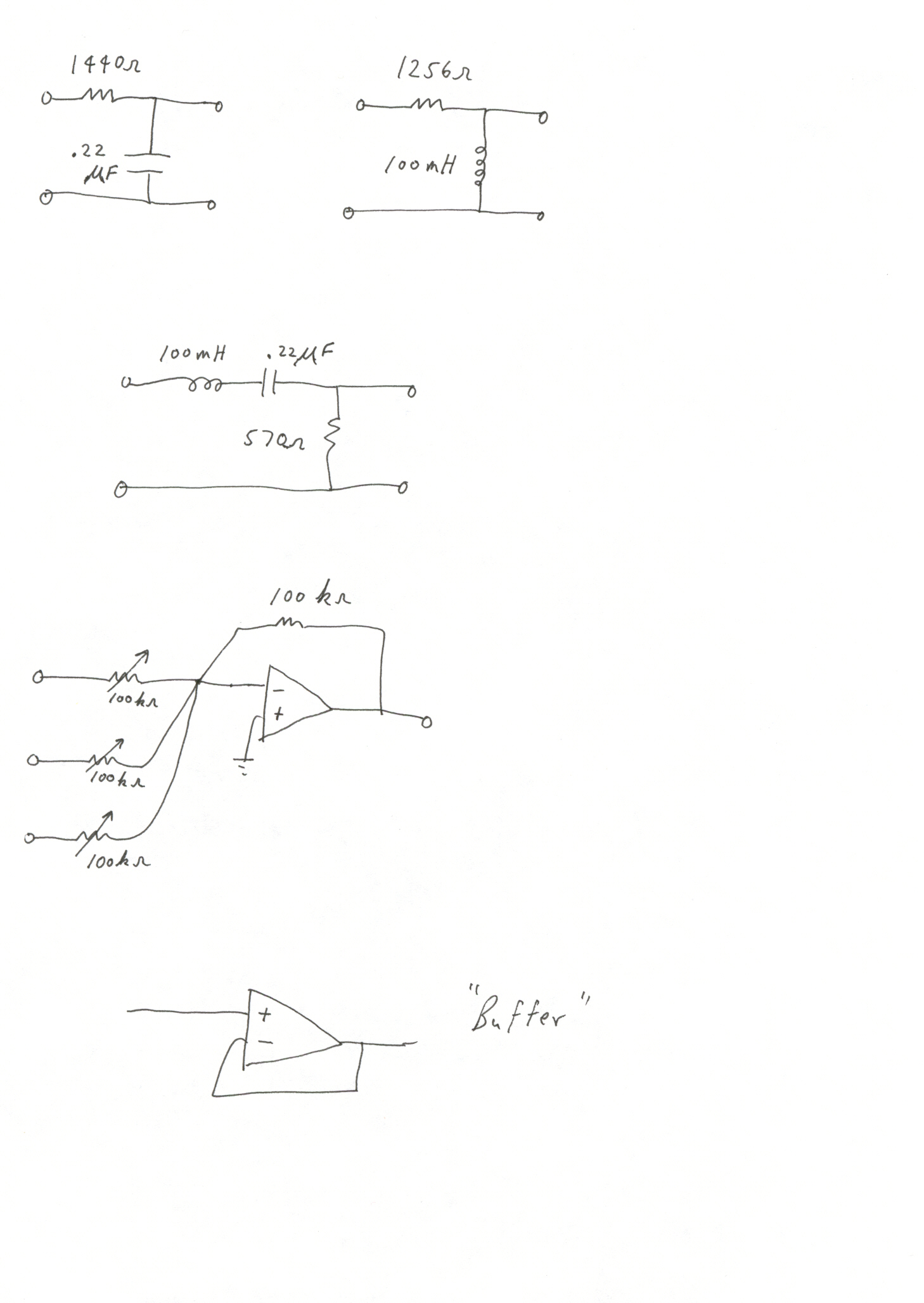
Problem: Design and construct a three-band equalizer circuit. Your circuit should include three filters: a low-pass filter that passes frequencies up to about 500 Hz, a band-pass filter that passes frequencies centered around 1073 Hz, and a high-pass filter that passes frequencies above about 2000 Hz. You should be able to adjust the gain (or amplification) of each frequency band independently. You will demonstrate the operation of your equalizer by passing music through your circuit and playing the "equalized" music through a speaker.
System Design: Use the "subsystem" circuits shown below to design your equalizer. Which circuit is the low-pass, band-pass, and high-pass filter? How can you tell the "cutoff" frequency of each filter? How should you connect the subsystems to form your equalizer? Do you need "buffer" circuits in your design?
Group Implementation: Students will work together to implement one equalizer in each lab session. I suggest that you divide into four groups, with three groups building and testing a filter (low-, band-, and high-pass), and one group building and testing the op amp summer and buffers. After each group verifies that their circuit works properly, connect them together to form the complete equalizer.
Procedure:
